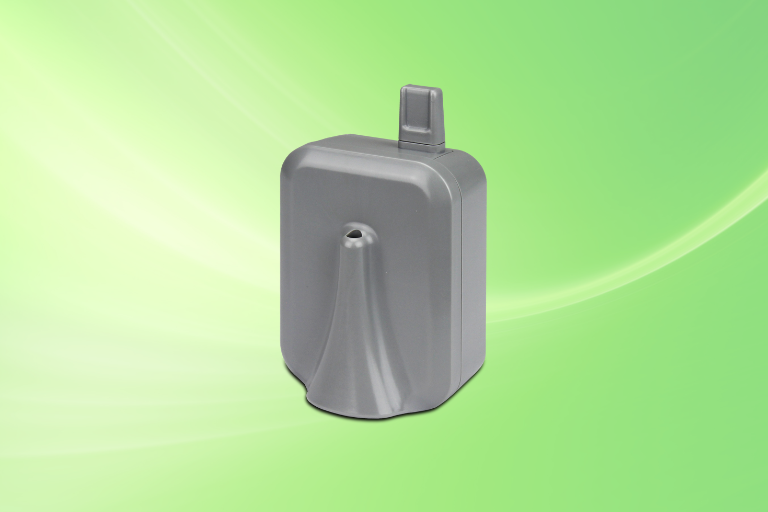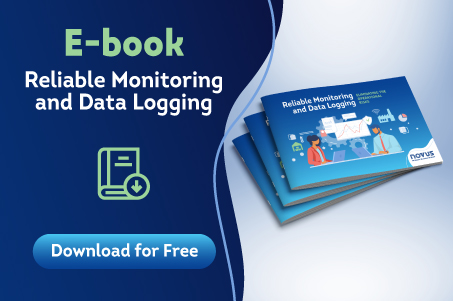The development of Telik Trafo Lite
How do you develop an innovative solution in the electric power industry? When instructed to create a device that could improve asset management, the NOVUS R&D team considered a few possibilities. Sandro Santos, R&D Director, explains how a concept resulted in a product about to be launched.
Very promising, since it allows the modernization of the electricity distribution grid, the Telik Trafo Lite project has been completed. It is a product with IoT (Internet of Things) features and is intended to measure the temperature of transformers (those that are typically on top of poles in the streets). From the beginning, its purpose involved sending temperature measurements wirelessly to a “central station”, where the data would be made available, usually via a dashboard.
As there are transformers spread over virtually the entire world, we identified that it would be best to send this data over long distances. Thus, the project was aimed at finding the best way to fulfill this goal. Likewise, to simplify its installation in transformers, the device would have to operate by battery, no longer requiring cables to power it. This also meant that it was not necessary to disconnect the power from the transformer to connect the cables to the product. When combining these two requirements (wireless communication over long distances and batteries to power the equipment), choosing an LPWAN network to transmit the data was an obvious choice.
LPWAN (Low-Power Wide Area Network) networks are designed to allow data to be sent over long distances with very low power consumption. The side effect of this achievement is the need to limit the amount of data sent, which is not an impediment to the efficiency of the Telik Trafo Lite application.
LoRa as the best option
When we conceptualized the product, one of the few mature solutions that existed for LPWAN networks was LoRa (Long Range) technology, which was eventually chosen by the team. LoRa has the previously mentioned benefits of low power consumption, which allows small batteries to last a few years in the device, and large data communication distances (typically a few kilometers). In addition, it still has public network alternatives with good coverage in several regions of the world.
Its operation is quite simple. As an analogy, imagine your phone’s mobile network coverage: A public LoRa network has a similar solution, where you pay a plan so that your device can connect to an antenna that provides the desired connectivity. To make this work, LoRa Alliance®, which standardizes all these protocols, created the LoRaWAN® standard.
For Telik Trafo Lite, in addition to using a LoRa module that followed this standard, we also obtained Ethingz certification. This seal certifies the compatibility of our device with the LoRaWAN network of Everynet, the world’s largest provider of such public networks. It is important to note that, in cases where the location does not have public networks or the application does not wish to use them, it is always possible to use a LoRa Gateway to create a coverage area for your devices!
Wireless electrical installation?
While developing this product, in addition to learning all the new technology and the challenges inherent in designing very low power devices, we had some other mishaps. Two of them related to the installation of the product: How to attach a device to a transformer?
The first idea for attaching Telik Trafo Lite to the target location was to use a magnet, since most transformers are made of metal. However, we did not have the slightest confidence that a magnet would endure this task. A detailed study by a team from ISI SIM (SENAI Institute for Innovation in Sensoring Systems, Technology and Innovation Division of SENAI RS), our partner at the beginning of this project, indicated the type of magnet suitable to resist the strong winds and high temperatures that the device must withstand. The study included the implementation phase and the tests necessary to consolidate our confidence in the proposed magnet.
As for the installation, the other challenge was related to the difficulty to position the device on the transformer. Our first proposal involved raising a technician to position the device manually. By contacting people in the area, we discovered that using operation poles is a common practice and it became a possibility for our project.
This led us to adapt the Telik Trafo Lite housing, making it easily attachable to an operation pole and thus allowing it to be easily and quickly positioned (and removed if necessary) by field technicians. Creating a cone-shaped adapter on the device and another adapter to be attached to the operation pole was what allowed to successfully achieve this goal. In practice, this “installation” mode can take as little as two minutes, enabling a professional to install many units in a short time.
What challenged the temperature measurement experts?
A third challenge was related to the temperature measurement of the transformer. This is ironic, given that NOVUS has been working with temperature measurement for decades! This new application had some different features, which made it difficult to measure the temperature with the accuracy expected by our product. Fortunately, with NOVUS’ expertise in the temperature measurement business, we were able to find a suitable solution.
Many of these improvements would not have happened without some initial testing with companies that recognized the value of the solution in real applications. The history of device and technology development at NOVUS allows the R&D team to explore multiple ways to solve the challenges of a project. Relying on partners, who use their expertise and purpose to support these projects, is also key to producing a product that meets NOVUS’ quality standards.
This article was written by Sandro Santos, NOVUS’ Director of Research and Development
Read more:
Interaction between R&D and the factory

















